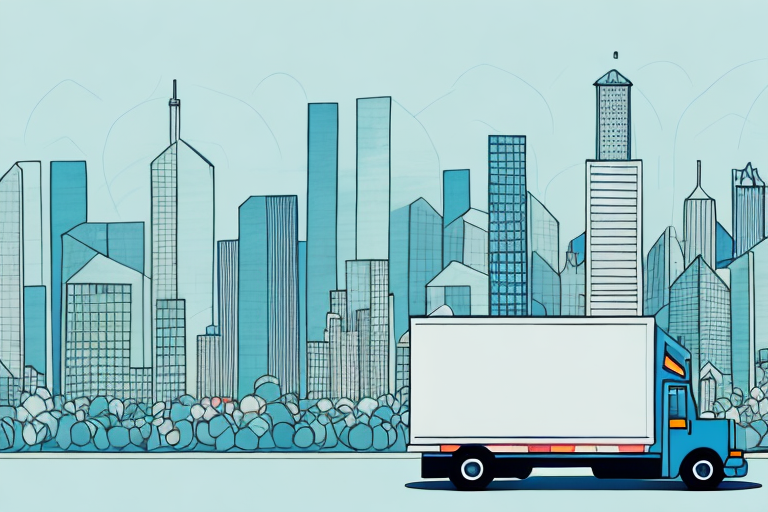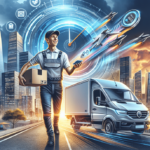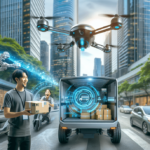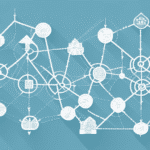Evolution of Delivery Services: From Traditional to Modern Methods
Delivery services have undergone significant transformation over the centuries, evolving from simple message carriers on horseback to sophisticated, technology-driven logistics networks. The advent of e-commerce in the 21st century has been a pivotal factor in this evolution, introducing new challenges and opportunities for delivery companies. As online marketplaces continue to expand, the demand for faster and more reliable delivery options has surged, leading to the emergence of innovative delivery models such as same-day and next-day services.
Historical Context
Historically, delivery services were limited by the speed and reliability of available transportation. The introduction of airmail in the 20th century marked a significant advancement, allowing for quicker delivery times. However, the true revolution began with the rise of the internet and e-commerce, fundamentally changing consumer expectations and delivery requirements.
Rise of E-commerce and New Delivery Models
The explosive growth of e-commerce has necessitated the development of new delivery models to meet customer demands for speed and efficiency. According to a Statista report, global e-commerce sales are projected to reach $6.54 trillion by 2023. This growth has spurred the adoption of same-day and next-day delivery services by major players like Amazon and Walmart, setting new industry standards.
Technological Advances: Drones and Automation
Technological innovations such as drones and automated vehicles are poised to further revolutionize the delivery industry. Companies like Amazon Prime Air and UPS Flight Forward have been testing drone deliveries to enhance speed and reduce costs. Automated warehouses, powered by robotics and artificial intelligence, streamline the sorting and shipping processes, enabling higher efficiency and scalability.
Technology and Innovation in Delivery
Technology is at the forefront of transforming delivery services, driving enhancements in speed, accuracy, and customer satisfaction. From advanced tracking systems to automation in warehouses, technological advancements are reshaping the logistics landscape.
Advanced Tracking Systems
Modern delivery companies employ state-of-the-art tracking systems that provide real-time updates to customers. These systems utilize GPS and IoT (Internet of Things) technologies to monitor shipments, ensuring transparency and reliability. For instance, FedEx and UPS offer comprehensive tracking platforms that allow customers to monitor their packages at every stage of the delivery process.
Automation in Warehousing and Delivery
Automation in warehouses has significantly increased efficiency and reduced operational costs. Automated guided vehicles (AGVs) and robotic arms handle tasks such as sorting, packaging, and inventory management with high precision. Companies like Amazon have invested heavily in automated fulfillment centers, enabling them to process orders at unprecedented speeds.
Customer Experience Technologies
Enhancing the customer experience is a key focus for delivery companies. Mobile applications that offer real-time tracking, delivery notifications, and flexible scheduling options have become essential tools. Additionally, technologies like Virtual Reality (VR) and Augmented Reality (AR) are being explored to provide immersive and interactive customer experiences, potentially transforming how consumers interact with delivery services.
The Role of E-commerce and Consumer Behavior
E-commerce has fundamentally altered consumer behavior, driving the demand for more efficient and reliable delivery services. As online shopping becomes increasingly prevalent, delivery companies must adapt to meet evolving customer expectations.
Growth of Online Retail and Delivery Demand
The rise of online retail giants such as Amazon and Alibaba has significantly increased the volume of deliveries. This surge has prompted the development of scalable logistics solutions to handle peak demand periods, such as holiday seasons. E-commerce platforms often collaborate with third-party logistics providers to ensure timely and efficient deliveries.
Balancing Speed and Cost Effectiveness
Delivering quickly while maintaining cost efficiency remains a critical challenge for delivery companies. Innovations like route optimization algorithms and fuel-efficient vehicles help balance these demands. According to a Deloitte report, implementing advanced analytics for route planning can reduce delivery times by up to 20% and operational costs by 15%.
Sustainability and Eco-Friendly Options
There is a growing consumer preference for sustainable and environmentally friendly delivery options. Delivery companies are responding by adopting green practices such as using electric vehicles, bicycles, and incorporating sustainable packaging materials. Initiatives like UPS's commitment to achieving carbon neutrality by 2050 highlight the industry's shift towards sustainability.
Competitive Landscape and Strategies
The delivery industry is highly competitive, with major players continuously innovating to gain market share and meet customer expectations. Both large corporations and niche startups are actively shaping the landscape through various strategies.
Major Industry Players
Key players in the delivery industry include Amazon, FedEx, UPS, DHL, and the United States Postal Service (USPS). These companies leverage extensive networks, advanced technology, and substantial resources to maintain their market positions. Additionally, regional players and specialized delivery services cater to specific market segments, enhancing overall competition.
Innovative Delivery Technologies
Investment in innovative delivery technologies is a primary strategy for competitive advantage. Amazon's drone delivery project and UPS's autonomous delivery trucks exemplify how companies are pushing the boundaries of technology to enhance delivery speed and efficiency. These advancements not only improve operational capabilities but also provide unique value propositions to customers.
Sustainable Practices in Delivery
Adopting sustainable practices is becoming a significant differentiator in the competitive landscape. Companies are investing in electric delivery vehicles, optimizing routes to reduce fuel consumption, and utilizing eco-friendly packaging. These efforts not only contribute to environmental sustainability but also appeal to environmentally conscious consumers, fostering brand loyalty.
The Gig Economy and Workforce Development
The gig economy has had a profound impact on the delivery industry, offering flexibility and scalability but also presenting challenges related to workforce management and labor rights.
Gig Economy's Role in Expanding Delivery Capacity
Platforms like Uber Eats, DoorDash, and Instacart have revolutionized the delivery workforce by providing flexible employment opportunities. This model allows delivery companies to scale their operations quickly to meet fluctuating demand without the overhead of maintaining a large, permanent workforce. According to a Bureau of Labor Statistics report, the gig economy accounted for approximately 36% of the U.S. workforce in 2022.
Worker Rights and Regulatory Issues
Despite its benefits, the gig economy raises significant concerns regarding worker rights and job security. Gig workers often lack access to benefits such as health insurance, paid leave, and retirement plans. Legal debates continue over the classification of gig workers as independent contractors versus employees, with implications for labor protections and company liabilities.
Future of Delivery Workforce
The future of the delivery workforce may involve a hybrid model that combines gig workers with full-time employees. This approach could offer flexibility while ensuring a baseline of worker protections and benefits. Additionally, advancements in automation and robotics may reduce reliance on human labor for certain delivery tasks, reshaping the workforce landscape.
Challenges and Future Outlook
While the delivery industry continues to grow, it faces numerous challenges that require strategic solutions to ensure sustainable progress and competitiveness.
Current Challenges for Delivery Companies
Delivery companies face several challenges, including intense competition, rising operational costs, and driver shortages. Regulatory compliance, such as adhering to labor laws and safety standards, adds another layer of complexity. Additionally, the increasing demand for faster delivery times puts pressure on logistics and supply chain management systems.
Strategies to Overcome Challenges
To navigate these challenges, delivery companies are adopting a range of strategies. Investing in advanced technologies like artificial intelligence and machine learning aids in optimizing routes and improving efficiency. Building strategic partnerships with technology firms and other stakeholders enhances operational capabilities. Furthermore, focusing on employee training and retention programs helps mitigate workforce shortages.
Future Trends in Delivery Services
The future of delivery services is poised for continued innovation and transformation. Emerging trends include the wider adoption of autonomous delivery vehicles, increased use of sustainable practices, and the integration of blockchain technology for enhanced transparency and security in supply chains. Additionally, the personalization of delivery services, driven by data analytics, will cater to individual consumer preferences, further enhancing the customer experience.
Conclusion
The delivery industry is rapidly evolving, driven by technological advancements, changing consumer behaviors, and the dynamic nature of the gig economy. As companies navigate the challenges and leverage new opportunities, the future of delivery services promises to be more efficient, sustainable, and customer-centric. Staying ahead in this competitive landscape will require continuous innovation, strategic investments, and a steadfast commitment to meeting the ever-evolving needs of consumers.






















